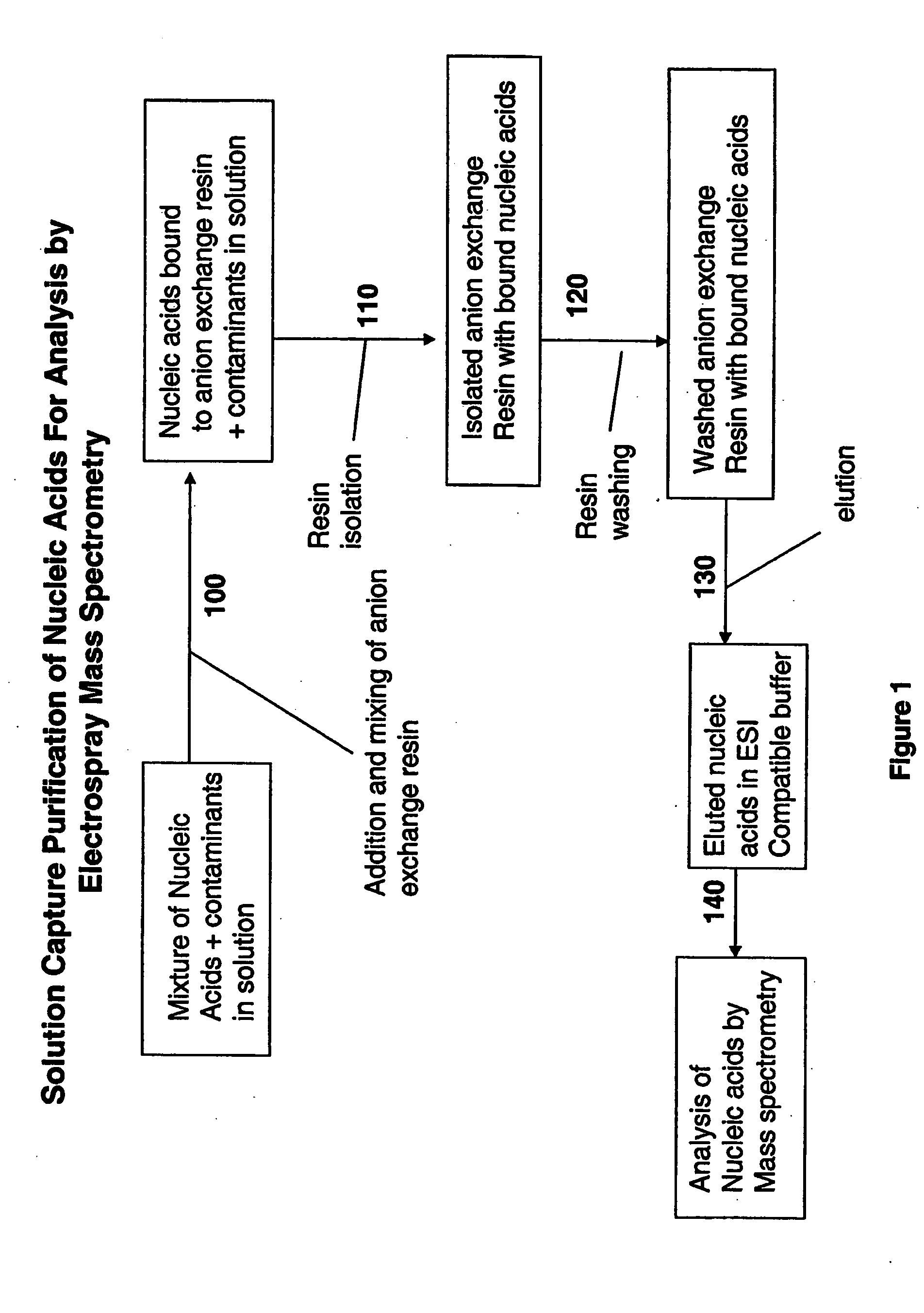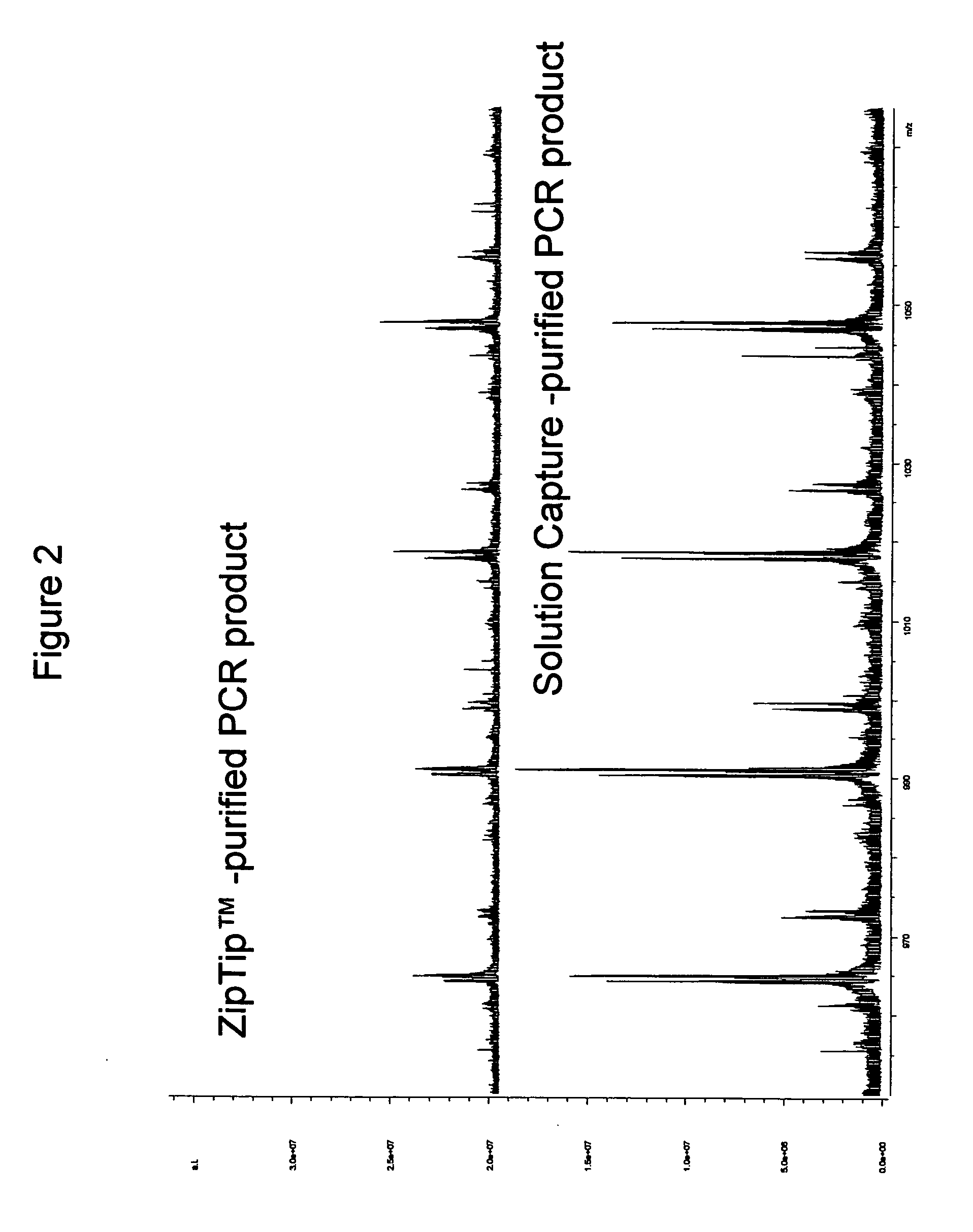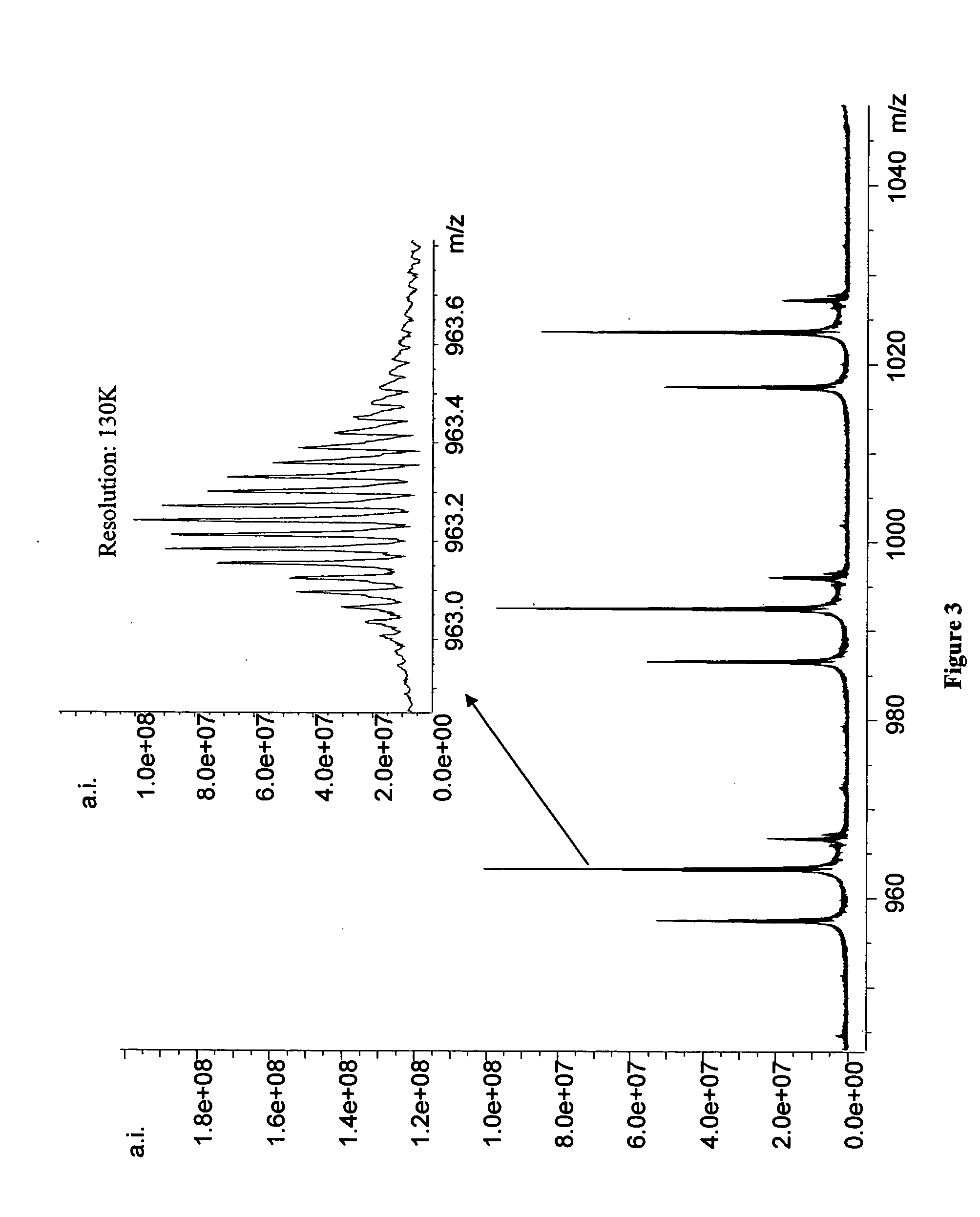Methods for rapid purification of nucleic acids for subsequent analysis by mass spectrometry by solution capture
a mass spectrometry and purification method technology, applied in the field of mass spectrometry analysis of nucleic acids, can solve the problems of inability to rapidly and fully automate high-throughput implementation, limited utility of methods with relatively small amplicons, and notoriously intolerable results
- Summary
- Abstract
- Description
- Claims
- Application Information
AI Technical Summary
Benefits of technology
Problems solved by technology
Method used
Image
Examples
example 1
Nucleic Acid Isolation and PCR
[0042] In one embodiment, nucleic acid is isolated from the organisms and amplified by PCR using standard methods prior to BCS determination by mass spectrometry. Nucleic acid is isolated, for example, by detergent lysis of bacterial cells, centrifugation and ethanol precipitation. Nucleic acid isolation methods are described in, for example, Current Protocols in Molecular Biology (Ausubel et al.) and Molecular Cloning; A Laboratory Manual (Sambrook et al.). The nucleic acid is then amplified using standard methodology, such as PCR, with primers which bind to conserved regions of the nucleic acid which contain an intervening variable sequence as described below.
[0043] General Genomic DNA Sample Prep Protocol: Raw samples are filtered using Supor-200 0.2 μM membrane syringe filters (VWR International). Samples are transferred to 1.5 ml eppendorf tubes pre-filled with 0.45 g of 0.7 mm Zirconia beads followed by the addition of 350 μl of ATL buffer (Qiag...
example 2
Mass Spectrometry
[0045] The mass spectrometer used is a Bruker Daltonics (Billerica, Mass.) Apex II 70e electrospray ionization Fourier transform ion cyclotron resonance mass spectrometer (ESI-FTICR-MS) that employs an actively shielded 7 Tesla superconducting magnet. All aspects of pulse sequence control and data acquisition were performed on a 1.1 GHz Pentium II data station running Bruker's Xmass software. 20 μL sample aliquots were extracted directly from 96-well microtiter plates using a CTC HTS PAL autosampler (LEAP Technologies, Carrboro, N.C.) triggered by the data station. Samples were injected directly into the ESI source at a flow rate of 75 μL / hr. Ions were formed via electrospray ionization in a modified Analytica (Branford, Conn.) source employing an off axis, grounded electrospray probe positioned ca. 1.5 cm from the metalized terminus of a glass desolvation capillary. The atmospheric pressure end of the glass capillary is biased at 6000 V relative to the ESI needle ...
example 3
Procedure for Semi-Automated Purification of a PCR Mixture using Commercially Available ZipTips™
[0047] For pre-treatment of ZipTips™ AX (Millipore Corp. Bedford, Mass.), the following steps were programmed to be performed by an Evolution™ P3 liquid handler (Perkin Elmer) with fluids being drawn from stock solutions in individual wells of a 96-well plate (Marshall Bioscience): loading of a rack of ZipTips™ AX; washing of ZipTips™ AX with 15 μl of 10% NH4OH / 50% methanol; washing of ZipTips™ AX with 15 μl of water 8 times; washing of ZipTips™ AX with 15 μl of 100 mM NH4OAc.
[0048] For purification of a PCR mixture, 20 μl of crude PCR product was transferred to individual wells of a MJ Research plate using a BioHit™ multichannel pipette. Individual wells of a 96-well plate were filled with 300 μl of 40 mM NH4HCO3. Individual wells of a 96-well plate were filled with 300 μl of 20% methanol. An MJ research plate was filled with 10 μl of 4% NH4OH. Two reservoirs were filled with deionized ...
PUM
 Login to View More
Login to View More Abstract
Description
Claims
Application Information
 Login to View More
Login to View More - R&D
- Intellectual Property
- Life Sciences
- Materials
- Tech Scout
- Unparalleled Data Quality
- Higher Quality Content
- 60% Fewer Hallucinations
Browse by: Latest US Patents, China's latest patents, Technical Efficacy Thesaurus, Application Domain, Technology Topic, Popular Technical Reports.
© 2025 PatSnap. All rights reserved.Legal|Privacy policy|Modern Slavery Act Transparency Statement|Sitemap|About US| Contact US: help@patsnap.com



